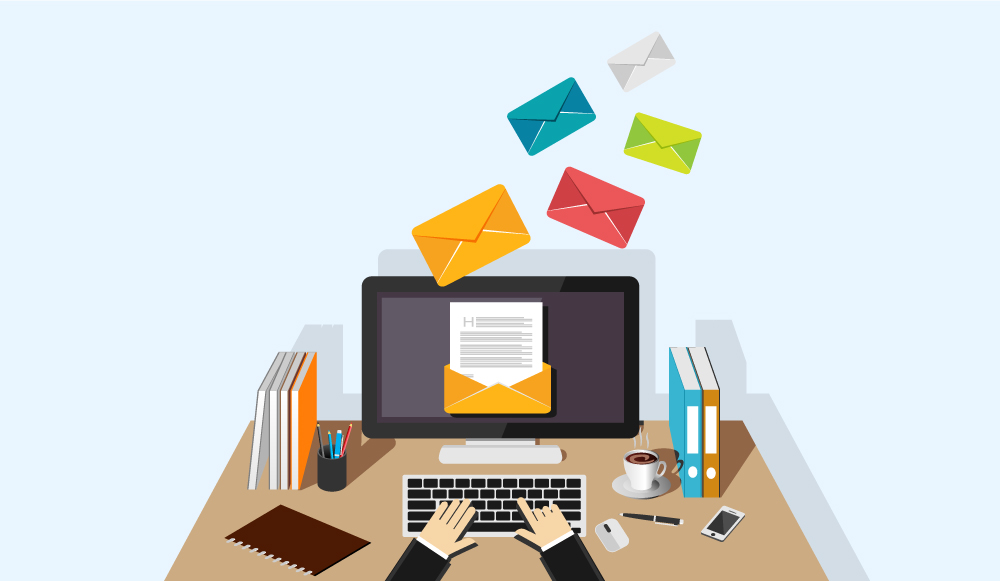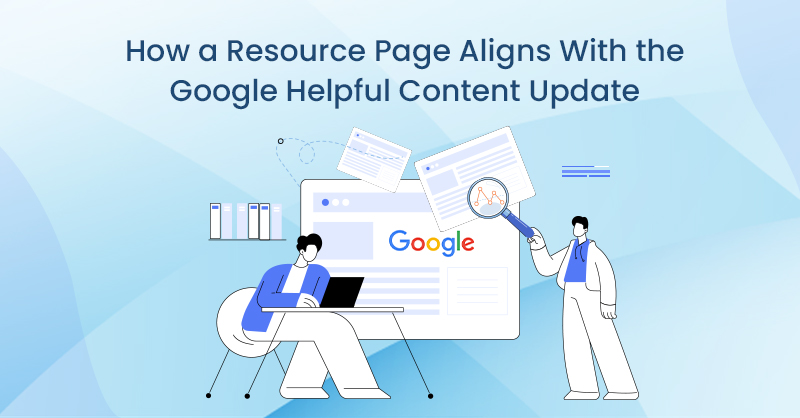When it comes to email pitches, I've been on both sides of the fence. I've sent lots of emails suggest an article, ask to remove/fix a link and invite to #VCBuzz interview. I've received hundreds (maybe thousands at this point) emails pitching me the same.
Therefore, I know too well that emails often get lost. It's hard to explain, but for at least a quarter of my emails I would have probably completely missed the pitch unless the person had followed-up. In fact, following up is recognized as one of the most important habits of successful people.
That's why it's very important to know how to write an effective follow-up email so you have a higher chance of a favorable outcome. Here are some guidelines on how to do just that.
When to Send?
In the case of a content request (guest post pitch, expert interview, etc), it's best to send a catchy follow-up email a week after the first one as you don't want to be too aggressive. People are busy, don't get on their nerves.
For business meetings, it's also best to do it in the same time frame to make sure everything discussed is recalled and important tasks are done by everyone involved. Doing so promotes continuity and keeps the ball rolling in the direction you want.
What to Write?
The point of a follow-up is to get noticed. If your longer first pitch got lost in the queue named "I'll get to reading this when I have a minute" (this minute usually never happens), your follow-up should be a one-liner emphasizing why you want to hear back.
Be as brief as you can -- but don't miss your call-to-action! Here's a great example of a proper follow-up:

When sending a letter to a potential client, you can include a short sales pitch and say you'd like to discuss matters that may interest them soon.
For business meetings, you may include a recap of what ensued to confirm important points and ensure there was no misunderstanding whatsoever. Write how you plan to take things from what was discussed. If you got new ideas, then mention them.
Avoid expressing any negative feelings in your letter if there were any disagreements that occurred. Follow-up letters should convey your good manners and not put people off.
In some cases (especially when it comes to meeting follow-ups or cold pitching), it's a good idea to include an alternative way to engage the recipient. For example, if you included an attachment PDF case study in your initial email, a follow-up could include a link to a Slideshare version. Or better yet, a PDF case study can be converted into a flipbook using a tool like Flipsnack, which is a great way to collect leads and engage more people simply because it makes boring marketing content a joy to consume:
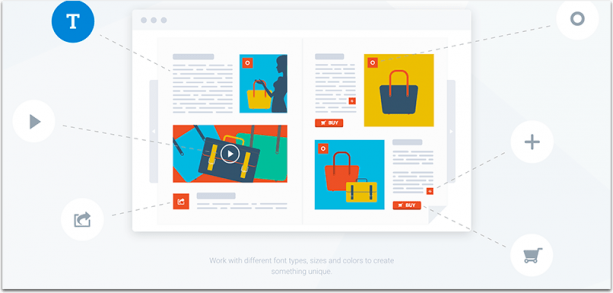
How to Write?
Keep in mind that you’d like your follow-up letter to highlight you in a positive manner. So it is wise that you proofread and proofread again to guarantee that no grammatical and spelling errors are present that may turn-off your recipient. Write in a strong, confident voice and observe proper formalities.
Read it to yourself and think how your recipient may react to your letter or whether it gives a good impression about you. Remember that sending out a poorly written letter may just be the cause of failure, so should you feel you need help, do not hesitate to ask a family member or friend or read some sample letters online.
Try to come up with an attention-grabbing subject line. Remember, this is your second email -- the first one might have already been missed in a pile of pitches, so do a better job this time. Here's one example that certainly got my attention:
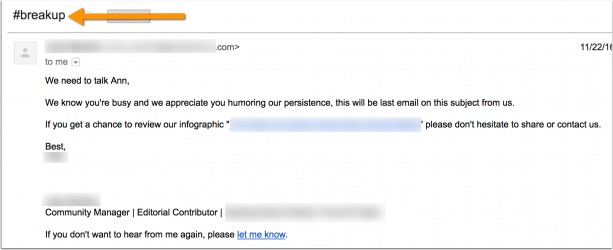
Wen it comes to email delivery, Colorlib has an awesome list of tools simplifying the task.
Email Follow-Up Tools
Here are a few tools you can use to improve your following-up strategy:
1. FollowupThen
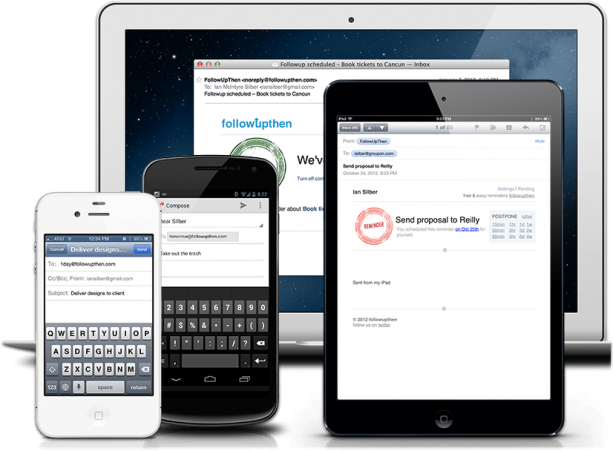
FollowupThen works as a simple inbox. Create a new email and include [any time]@followupthen.com in the "cc", "ccc" or "to" fields of your email:
- BCC: You will receive a follow-up regarding the email, but we won't bug the original recipient.
- TO: Send an email to your future self.
- CC: Schedule a reminder for you and the recipient.
In each case the follow-up email will be sent on the specified day depending on what you put in the [any time] part of your email. Here are a few examples:

FollowupThen is the simplest free tool you can use. I don't think it will track whether your initial email received a reply, it will send the follow up either way -- so craft your email accordingly.
2. RocketBolt (Gmail and Google Chrome Only)
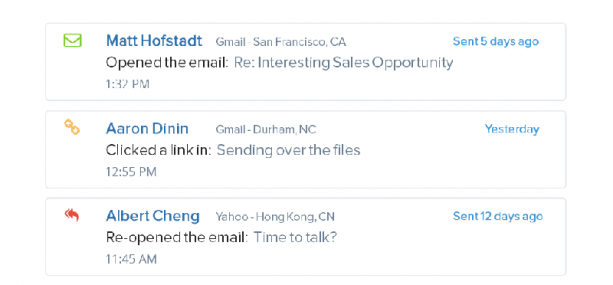
Add RocketBolt to your Chrome browser, activate in Gmail, and it will track and report your email opens and link clicks.
- Get alerted when emails you've sent have been opened and when links you include are clicked.
- Get instant access to social profiles and additional contact info of the people you're emailing so you can personalize your message.
- See browser notifications showing your email activity regardless of what website you're on.
3. Cyfe
I use Cyfe for pretty much anything including my email box management. The beauty about Cyfe is that you can create multiple widgets and monitor multiple related processes, reports and tools within one dashboard.

When it comes to following up, I use Cyfe to monitor my Gmail inbox, my Twitter mentions and my Zendesk account, and my GetResponse stats. You can also include Salesforce leads, QuickBooks sales and more depending on what you are using the dashboard for (for example, customer service, content influencer outreach or lead nurturing).
4. Rebump.cc
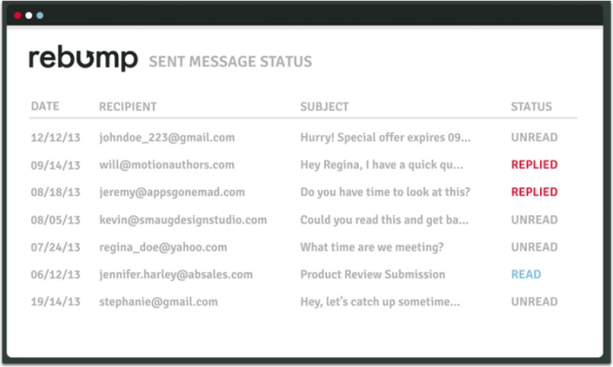
Rebump.cc is a Gmail app that also has Google Chrome and FireFox extensions. Send an email and Rebump will monitor your message to make sure you get a reply. And, if you don't, Rebump will automatically send email follow-ups bumping your email to then top of their inbox.
You can easily monitor the status of each email you send.
It's a similar concept to what we have inside MyBlogU with out built-in followup reminders.
5. Gmelius
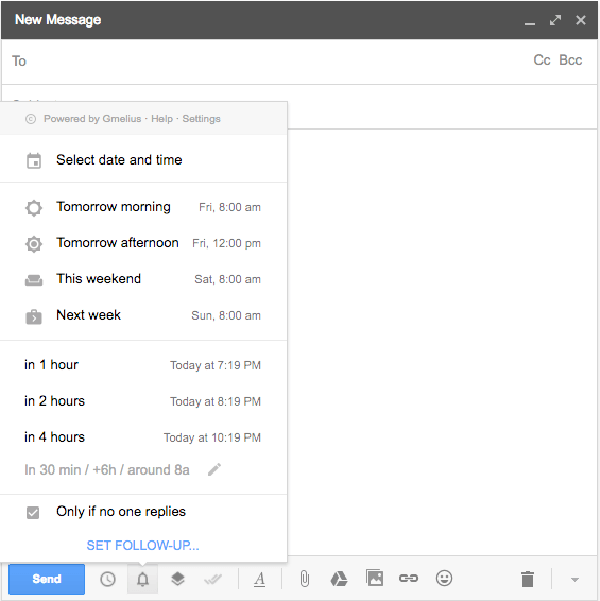
Gmelius is a browser plugin that adds some cool functionality to Gmail. It supports Google Chrome, Opera and Safari (no FireFox). Some of the cool feature you'll get:
- Send later (schedule emails)
- Email reminder to send yourself
- Email follow-ups
- Email templates
- Email notes
- To-do and task manager
- Email tracking (receive automatic "read" receipts)
6. Boomerang
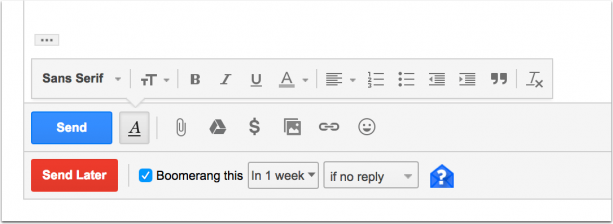
Boomerang is probably the best-known Gmail app that makes email follow up much more efficient. A few of my favorite features are:
- Recurring emails
- Response tracking
- Scheduling emails
Their recent feature, "Respondable," evaluates how likely you are to receive a response when you are typing an email.
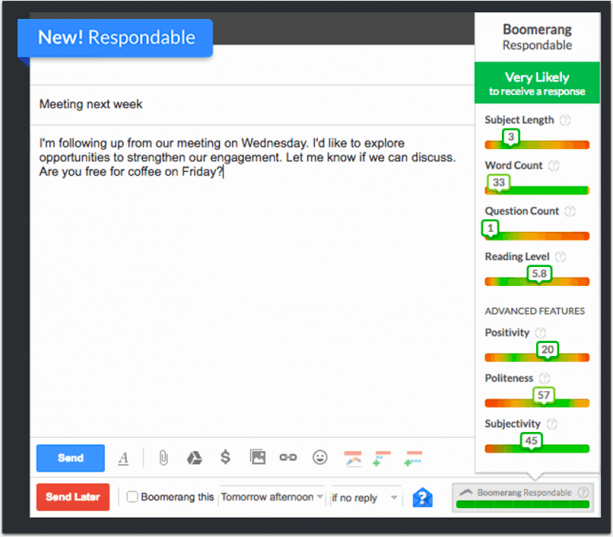
Have I missed any tips or tools? Please let me know in the comments!
